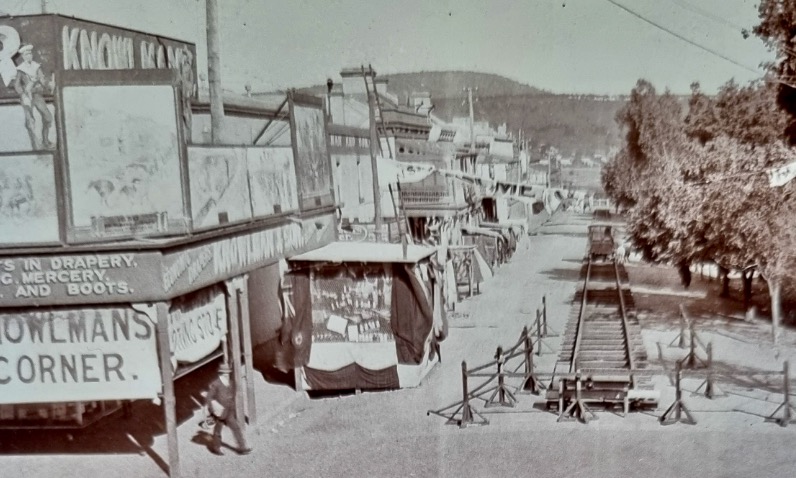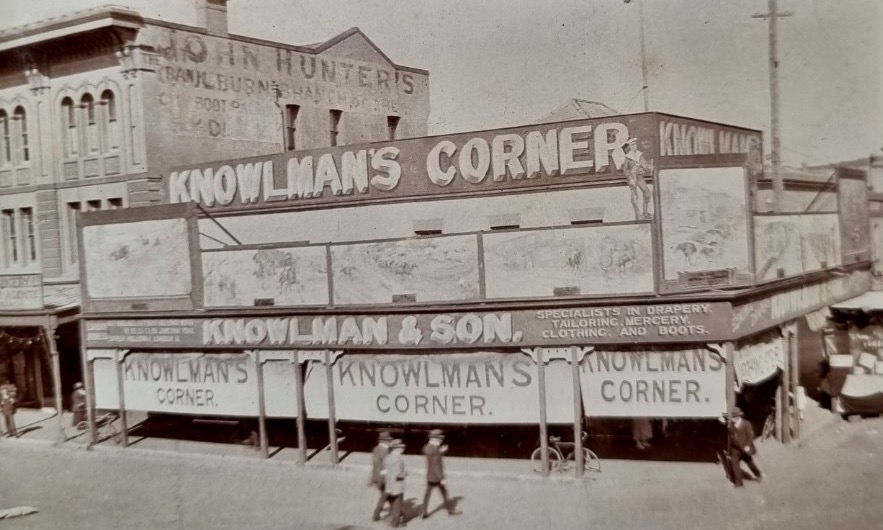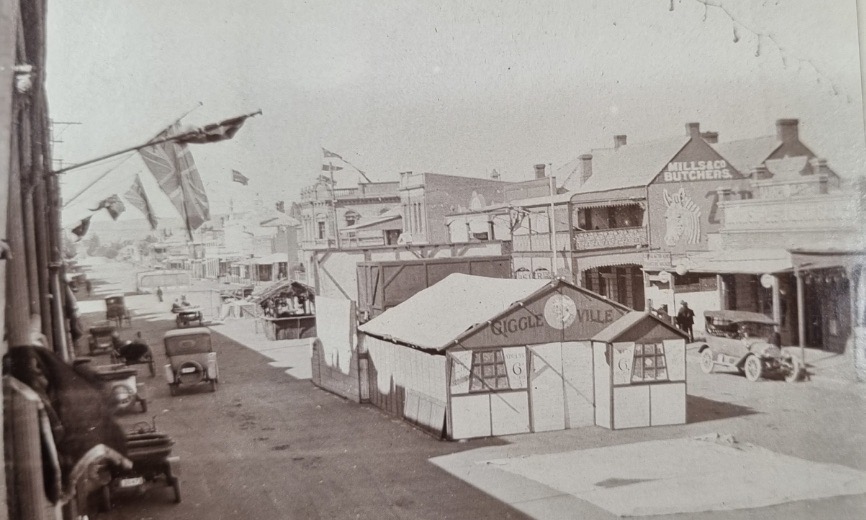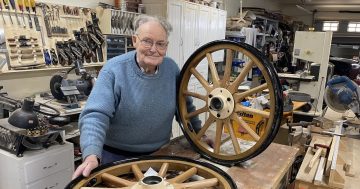
A streetcar they all desired in the 1920s ran along temporary tracks in Goulburn, powered by people pulling it to the top of the hill and letting it go – a far cry from the carefully engineered play structures of today. Photos: Elwyn Ledsam.
Long before children entertained themselves on iPads watching Bluey or playing Minecraft, a rail track was laid down the length of Market Street alongside Belmore Park in Goulburn.
A small platform on rail wheels was loaded up with children and taken to the top of Market Street and allowed to roll down to the bottom. From there it was hauled back to the top and the entire process was repeated, just for fun.
That was almost a century ago, when people’s idea of fun in the 1930s was more precarious compared with the risk-averse play equipment of today.
Goulburn rail author Leon Oberg adds the occasion, in May, 1935, was the King’s silver jubilee celebrations which included the provision of a single tram car contraption running on a standard gauge, quarter mile track along Market Street.
Taken from above what were then tearooms in Auburn Street, the photograph and those accompanying it show the early years of Knowlman’s store.
Retired butcher and car enthusiast Roger Doughty came across the photographs in an album that surfaced during his research of a particular car.
Roger had no idea what the purpose of the tracks was and asked his father-in-law Don Jones, a local barber, who said they were there for children’s fun and enjoyment.
A Goulburn-born dentist, Elwyn Ledsam, took the photos opposite the general store known as Knowlman’s Corner, which is today occupied by Harvest, a popular cafe. This keen amateur photographer had a great sense of fun too, apparently.
A member of the Liedertafel Society and St Saviour’s choir and deputy organist, he was reported to have been the first person in Goulburn to attach a sidecar to his motorbike. (Roger Doughty said motorbikes with sidecars were around well before Elwyn’s time.)
Newspaper records show the police made an example of Elwyn in 1910 after he collided with another vehicle in Auburn Street. He was charged and fined two pounds. A sergeant said the accident was bad luck and that he wasn’t seeking a heavy penalty, but wanted to keep ”those sorts of vehicles’’ under control. The rider was fined for not keeping nearest to the footpath on his left.

Knowlman’s Corner, standing separately from a neighbouring hotel that was later redeveloped to form part of a premier department store.
That didn’t dent Elwyn’s sense of fun. Entering Goulburn’s first Motor Club gymkhana in 1913, he covered his machine in blue and gold paper flowers, with the club’s colours waving merrily from an artistically arranged covering, closely resembling a miniature car. On his death at age 58, the Goulburn Evening Penny Post described him as one of the city’s best-known residents.
Roger Doughty points out one of Elwyn’s photographs shows Knowlman’s standing separately from a neighbouring hotel, previously known as the Bobby Burns and eventually delicensed. Knowlman’s acquired the building, established a hardware section on the ground floor and expanded into a premier department store.
The store used a flying-fox system where customers’ cash accompanied by a docket was bundled up and dispatched upstairs to shop assistants to check and send the change back. According to Roger, Allens Store and Charles Rogers operated similar aerial systems.
Goulburn’s aspirations for a tram can be found in 1899 newspaper records, when Sydney was contemplating replacing steam-driven motors on trams that were superseded by electric motors. The government suddenly found a number of motors with nothing left to do.
The Minister for Works had hinted that a steam service might be employed in different parts of the country, setting off claims from Crookwell and Goulburn for one of the trams.

These historical photos are thought to have been taken on some grand occasion and perhaps a festival, going by the bunting in Auburn Street, and what looks to be a temporary attraction, Giggle Ville.
Civic leaders argued for and against the idea, the doubters saying even if the government handed a tram over and put down the tracks, it would never pay for itself.
Goulburn has been toying with trains large and small ever since, from the much-loved Apex Club’s miniature train, to a little steam train at Marsden Weir and historic waterworks, to the stationary play train standing inside Belmore Park today. And the dreamers keep asking for an electrified service to Sydney, or a high-speed one, which time has shown to be more futile than the fun-loving folk of Goulburn who hauled up that little cart in Market Street.
Original Article published by John Thistleton on About Regional.













